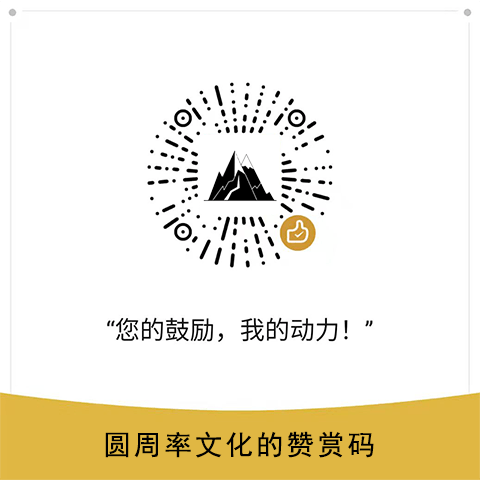作为创业公司的创始人,你 90% 的工作都是讲故事——筹款、招募联合创始人或员工、向用户营销、团结团队、与媒体交谈以及与董事会沟通。但我们大多数人从未学会如何讲好故事!

我们不需要重新发明轮子!皮克斯(Pixar)具有非凡的讲故事能力,每部电影都让人们津津乐道。《Nail Your Startup Pitch: Use Pixar's Story Formula to Win Over Investors》教你借用这些知识来讲更好的故事。
皮克斯一直是电影业最成功的工作室之一,电影票房收入超过 140 亿美元,并赢得了 23 项奥斯卡奖。via 《皮克斯的真实故事》。
The Story Spine
皮克斯有著名的严谨和结构化的故事创作过程,2012 年,来自皮克斯的故事艺术家 Emma Coates 使用标签 #storybasics 在推特上发布了 22 个讲故事的技巧,并汇总为《皮克斯的 22 条讲故事规则》,其中包括一个 Story Spine(故事脊梁,第 4 条规则):
Once upon a time there was ___. Every day, ___. One day ___. Because of that, ___. Because of that, ___. Until finally ___.
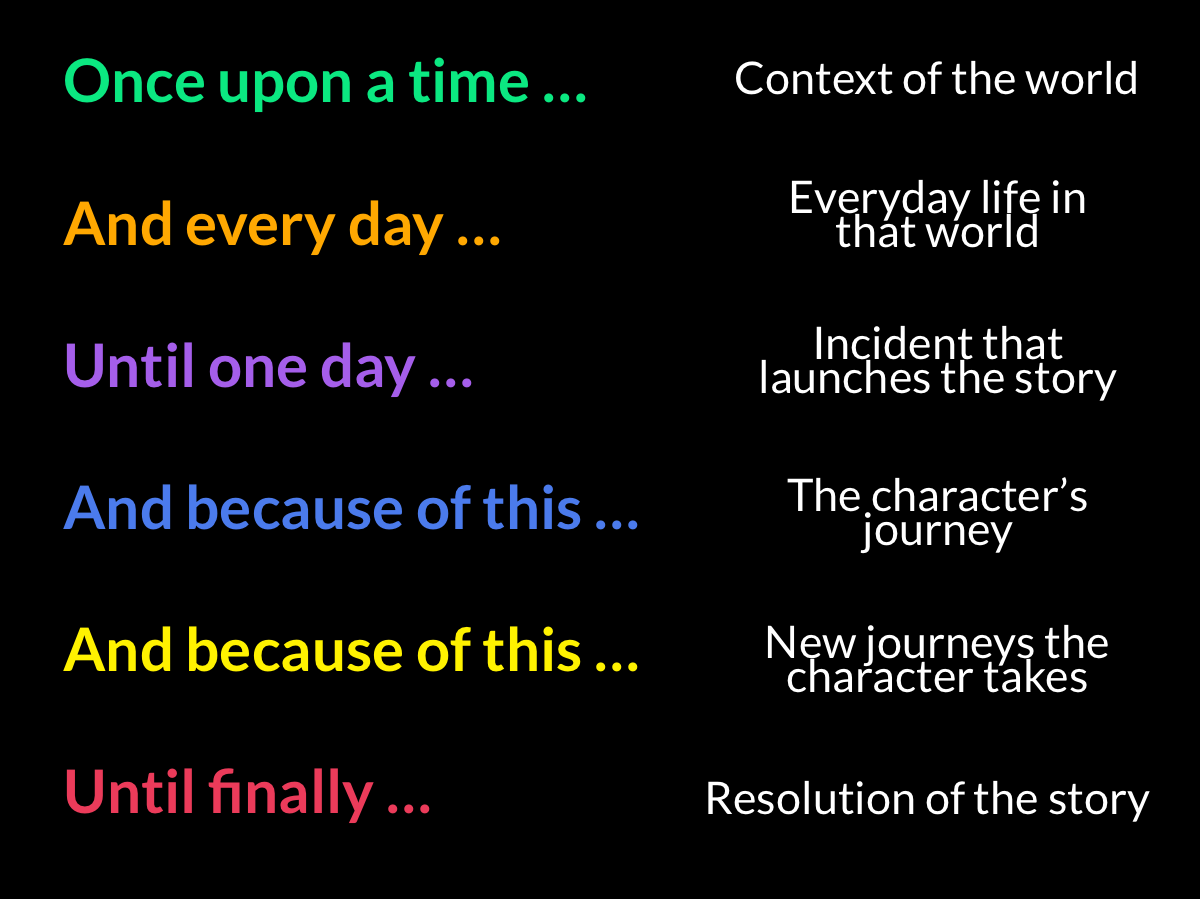
Story Spine 这种简单的结构迅速传达了故事的所有重要部分:初始条件、引发的事件、由此产生的紧张局势以及主角的旅程。以下是《海底总动员》(Finding Nemo)的故事结构。
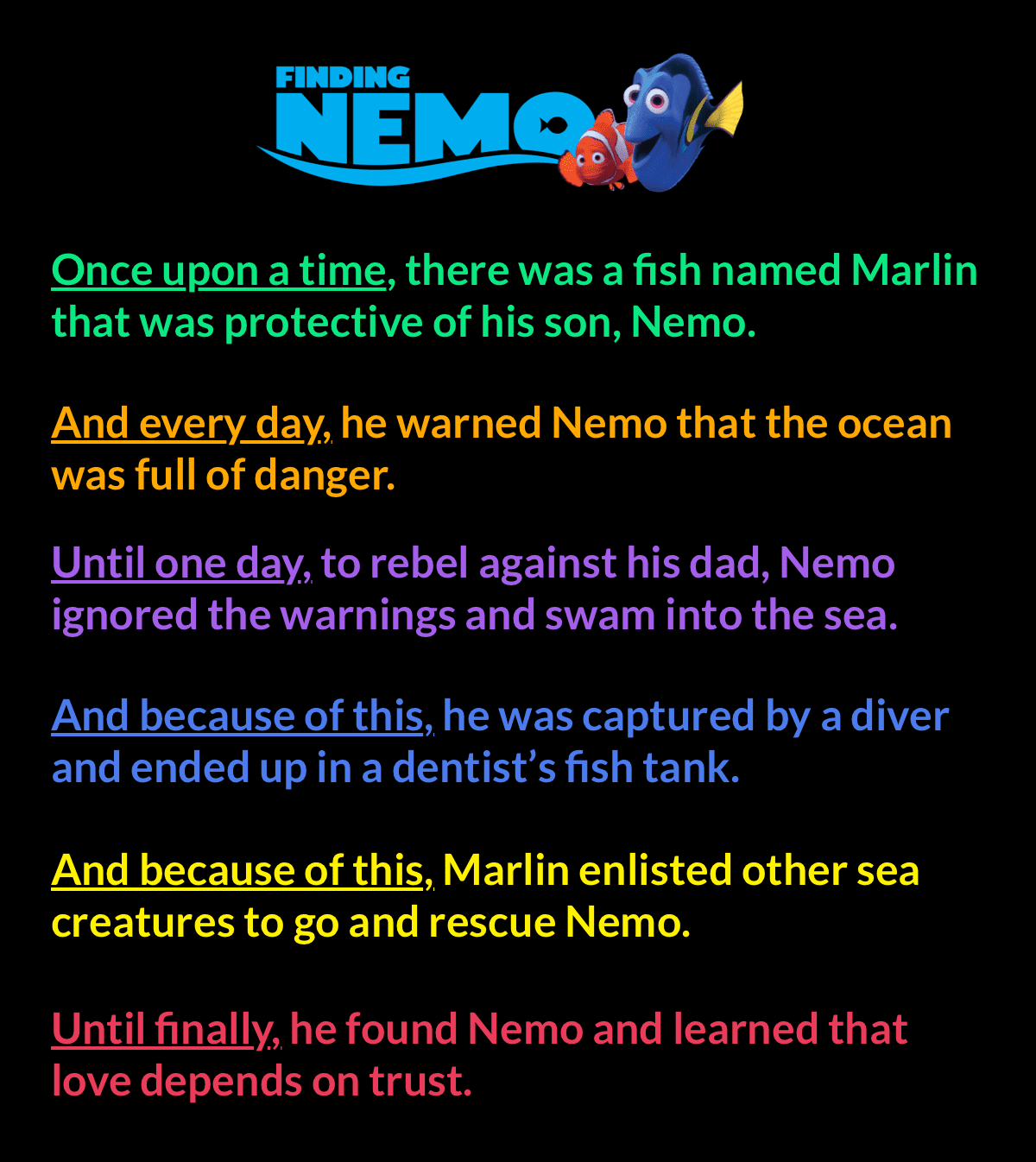
按照这个 Story Spine,每个故事都依次分成六个部分:
- (1)很久以前:描述一下世界以前的样子。
- (2)每天的生活:大家怎么过日子。
- (3)直到有一天:一个突发事件引发了巨变。
- (4)由于这件事:主人公遭受到了磨难。
- (5)由于这件事:主人公下定决心,展开新的冒险,找到出路。
- (6)最终:问题解决了,主人公过上了美好生活。
The Story Spine 赢得投资者
以下是 Story Spine 如何映射到创业推介的基本组成部分:
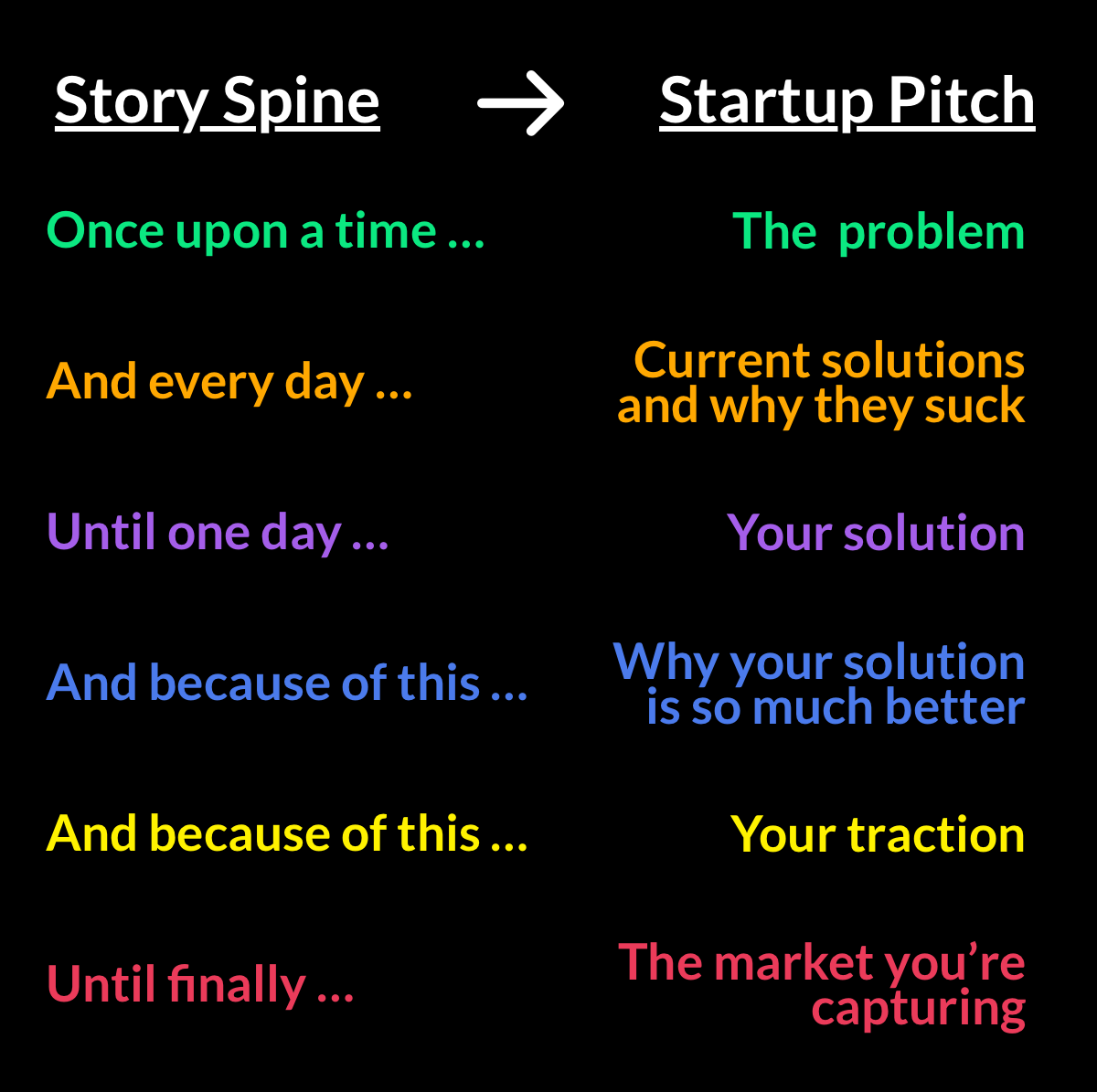
按照这个公式,讲好自己公司的故事:
- (1)“从前” =>问题——在这里提供强大的洞察力!
- (2)“而且每一天” =>为什么当前的解决方案很糟糕,用户很痛苦——突出当前解决方案所具有的与您的解决方案的主要价值主张直接相关的问题。
- (3)“直到有一天” =>我们想出了新的方法——专注您的确切解决方案。
- (4)“正因为如此” =>为什么你的解决方案好 10 倍——价值主张直接回答第 2 步的问题。
- (5)“正因为如此” =>你的吸引力——对的证据和成长的速度。
- (6)“直到最后” =>你正在占领的市场——可以达到多大程度来达成交易。
Story Spine 这种结构可以适用于任何领域的任何公司。
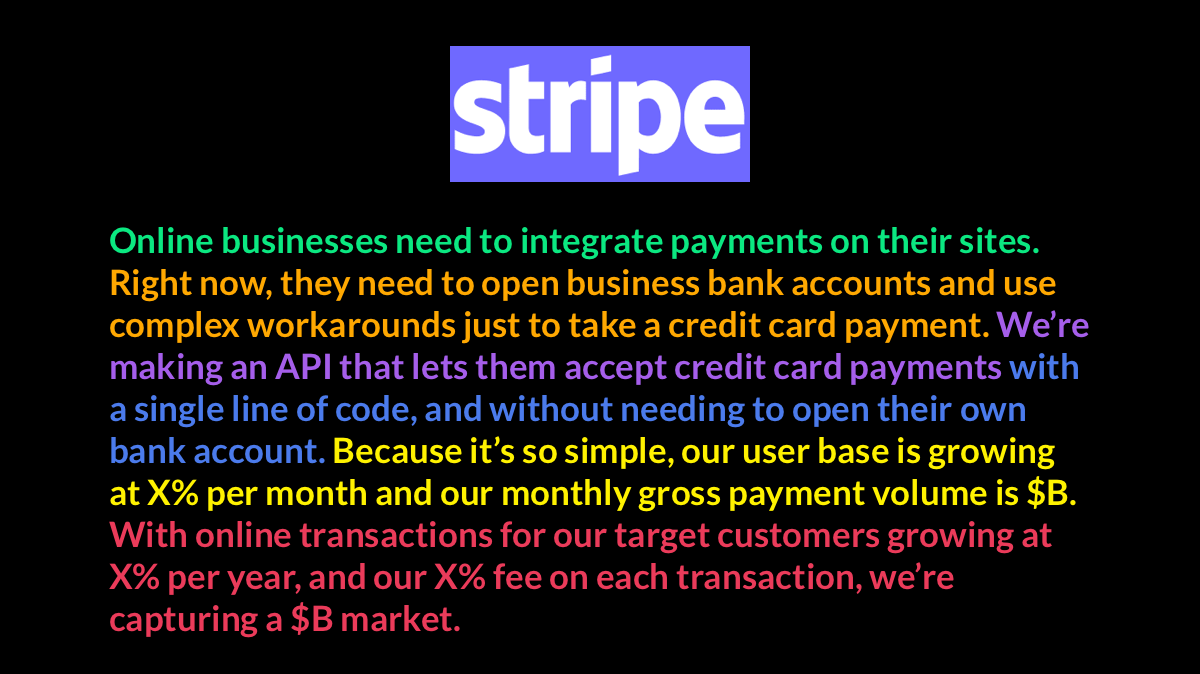
Stripe是一家提供让个人或公司在互联网上接受付款服务的支付服务提供商。
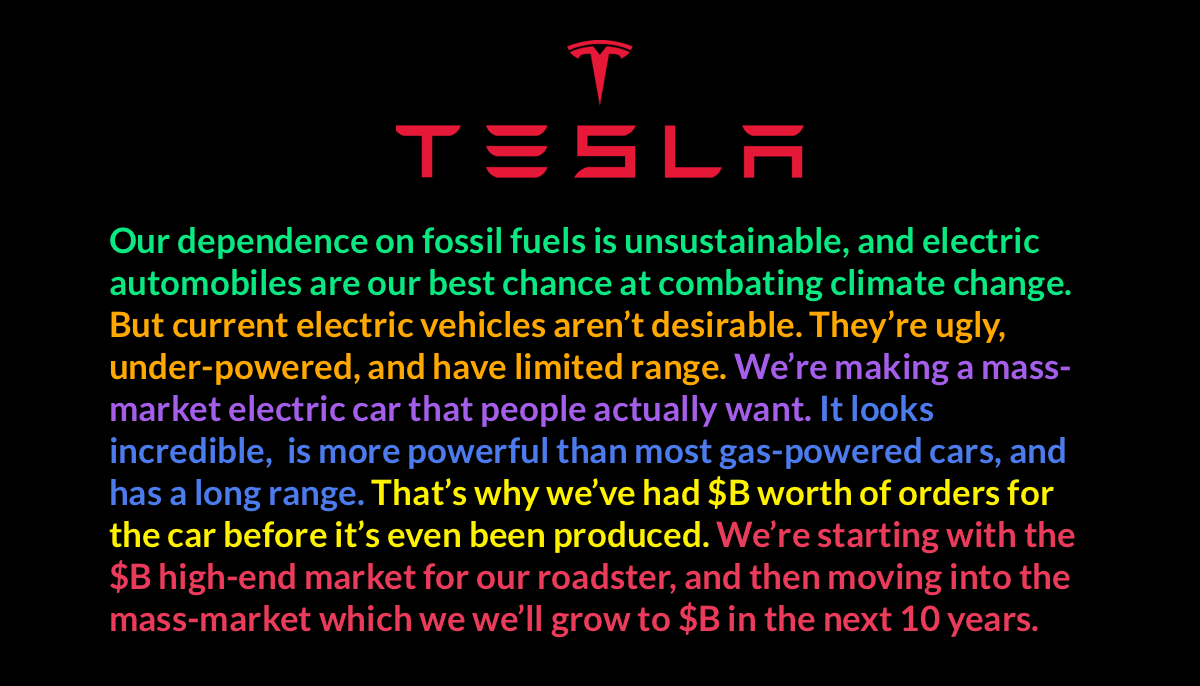
特斯拉是世界上最早的自动驾驶汽车生产商,已经成为世界最畅销充电式汽车公司。
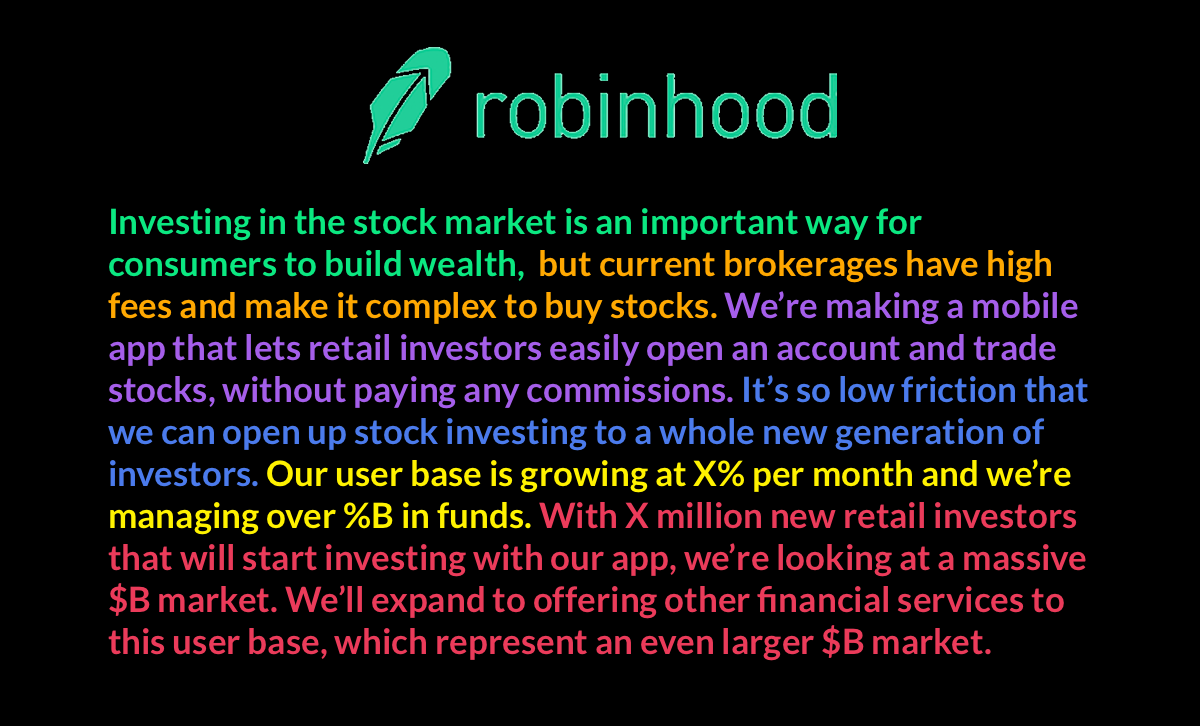
Robinhood是美国的一家金融服务企业,该公司以提供主要面向散户的股票app及网站著称。
The Story Spine 的来源
美国剧作家 Kenn Adams 在 1991 年提出了 The Story Spine,是一种理解即兴创作者所接受的故事结构的简单练习,它既是学习如何讲述一个精心构建的故事的练习技巧,也是帮助构建故事的概述工具。Kenn Adams 在《How to Improvise a Full-Length Play》一书中相当深入地探讨了如何把你的故事脊梁变成一个故事,他的一篇短文介绍了原始的 8 行格式:
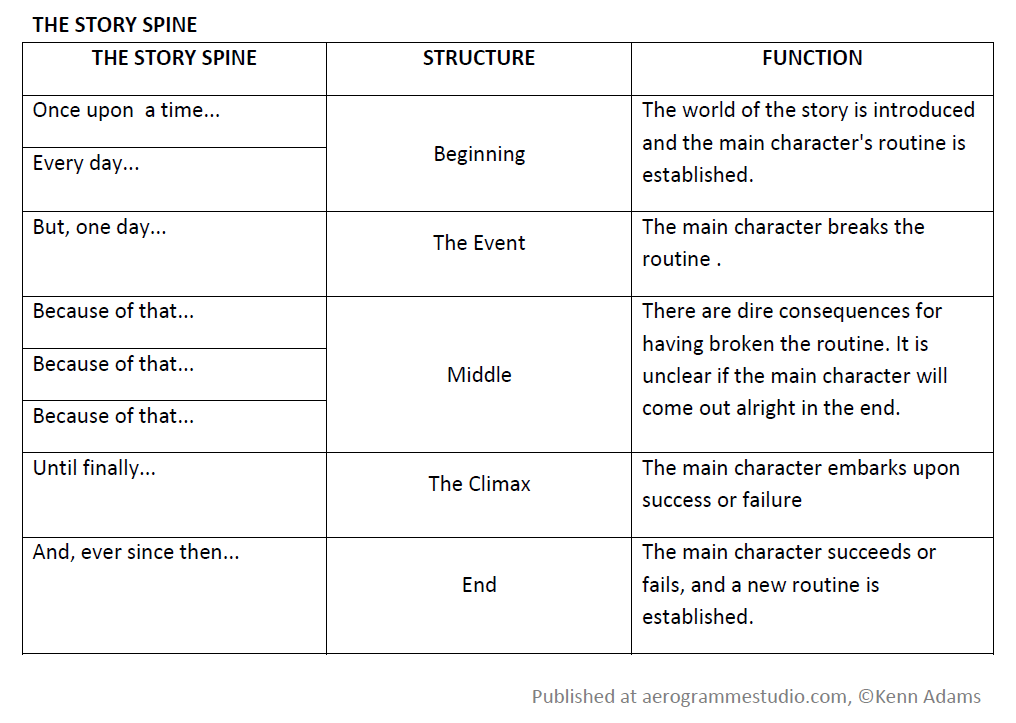
《Storytelling as Best Practice》的作者 Andy Goodman 2010 年 6 月发表于《free-range thinking》的文章《Building Stronger Stories With 7 Sentences》详细地探讨了基于原始的 8 行格式的 7 个构建更引人入胜的故事的简单步骤(少了中段的一个正因为如此……)。
附1:皮克斯的 22 条讲故事规则(via)
- You admire a character for trying more than for their successes.
- You gotta keep in mind what’s interesting to you as an audience, not what’s fun to do as a writer. They can be very different.
- Trying for theme is important, but you won’t see what the story is actually about til you’re at the end of it. Now rewrite.
- Once upon a time there was ___. Every day, ___. One day ___. Because of that, ___. Because of that, ___. Until finally ___.
- Simplify. Focus. Combine characters. Hop over detours. You’ll feel like you’re losing valuable stuff but it sets you free.
- What is your character good at, comfortable with? Throw the polar opposite at them. Challenge them. How do they deal?
- Come up with your ending before you figure out your middle. Seriously. Endings are hard, get yours working up front.
- Finish your story, let go even if it’s not perfect. In an ideal world you have both, but move on. Do better next time.
- When you’re stuck, make a list of what WOULDN’T happen next. Lots of times the material to get you unstuck will show up.
- Pull apart the stories you like. What you like in them is a part of you; you’ve got to recognize it before you can use it.
- Putting it on paper lets you start fixing it. If it stays in your head, a perfect idea, you’ll never share it with anyone.
- Discount the 1st thing that comes to mind. And the 2nd, 3rd, 4th, 5th – get the obvious out of the way. Surprise yourself.
- Give your characters opinions. Passive/malleable might seem likable to you as you write, but it’s poison to the audience.
- Why must you tell THIS story? What’s the belief burning within you that your story feeds off of? That’s the heart of it.
- If you were your character, in this situation, how would you feel? Honesty lends credibility to unbelievable situations.
- What are the stakes? Give us reason to root for the character. What happens if they don’t succeed? Stack the odds against.
- No work is ever wasted. If it’s not working, let go and move on – it’ll come back around to be useful later.
- You have to know yourself: the difference between doing your best & fussing. Story is testing, not refining.
- Coincidences to get characters into trouble are great; coincidences to get them out of it are cheating.
- Exercise: take the building blocks of a movie you dislike. How d’you rearrange them into what you DO like?
- You gotta identify with your situation/characters, can’t just write ‘cool’. What would make YOU act that way?
- What’s the essence of your story? Most economical telling of it? If you know that, you can build out from there.
附2:迪斯尼和皮克斯研发故事的关键要点
在 2016 年奥斯汀电影节上,华特迪士尼动画工作室的高级创意执行官 Bryan Davidson 和皮克斯动画工作室的创意开发助理 Erika Schmidt 联合介绍了迪士尼和皮克斯的研发过程,即严谨和结构化的故事创作过程。
- 在开始写作之前,花一些时间来发展几个想法。当一个想法出现在你的脑海中时,你可能会迫不及待地开始写大纲和特定场景,但是如果你花时间思考几个想法以及如何为这些故事创造世界、人物和主题,你的故事将会受益。
- 通过研究了解您故事的世界。在你甚至制作你的故事之前,你需要了解你的故事里里外外的世界。首先了解故事的世界将影响您如何创建角色、确定他们的目标、制造冲突和生成情节结构。
- 寻找值得信赖的合作者,帮助您在脚本旅程的各个步骤中将故事分开。皮克斯电影和最近在拉塞特领导下的迪斯尼动画电影成功的最大原因之一是反复和重新观看他们的电影以发现和解决问题的过程。我们还应该记住,写作本质上是一个迭代过程,我们的脚本总是可以改进的。
More
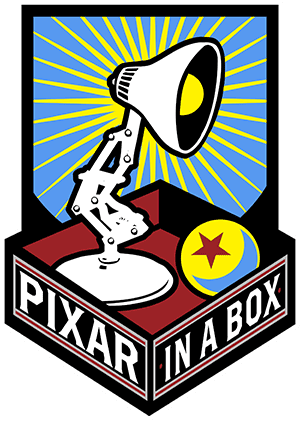
Pixar in a Box 是对皮克斯艺术家如何开展工作的幕后观察。你将能够为弹跳的球制作动画,建立一个机器人群,并使虚拟烟花爆炸。你在学校学到的科目——数学、科学、计算机科学和人文学科——每天都被用来在皮克斯创造令人惊叹的电影。
推荐您阅读《皮克斯的真实故事》以了解更多。
👍
